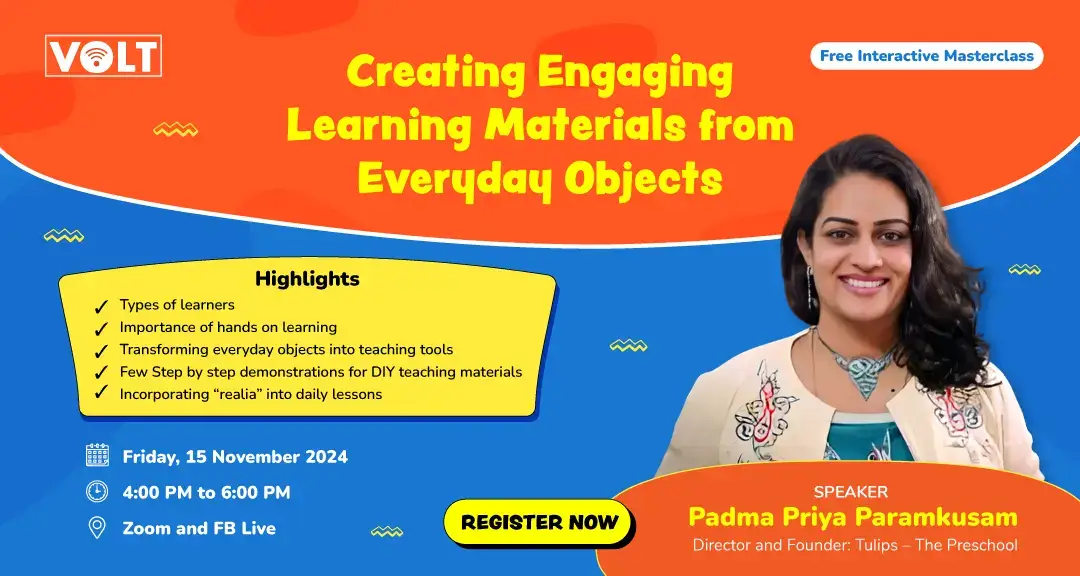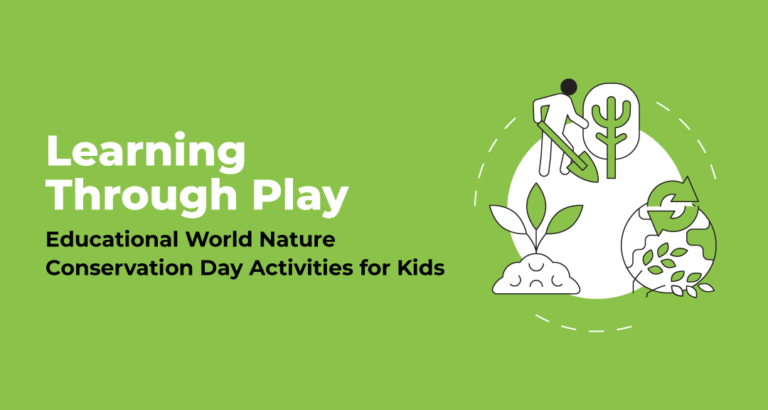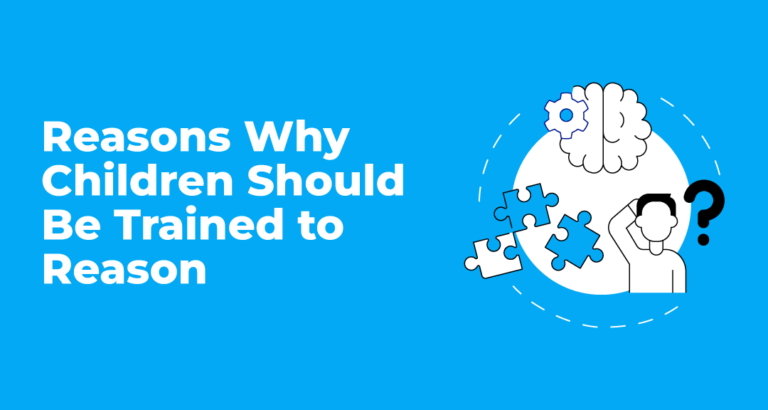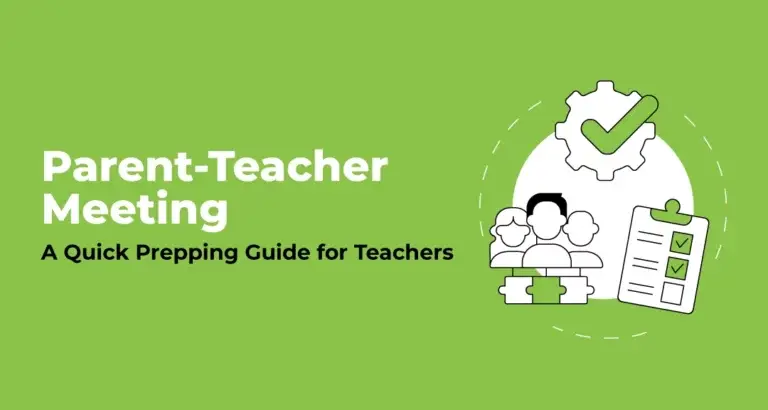Trash to Treasure: Crafting DIY Learning Tools from Recycled Materials
- Teaching
- November 9, 2024
- VOLT Learning
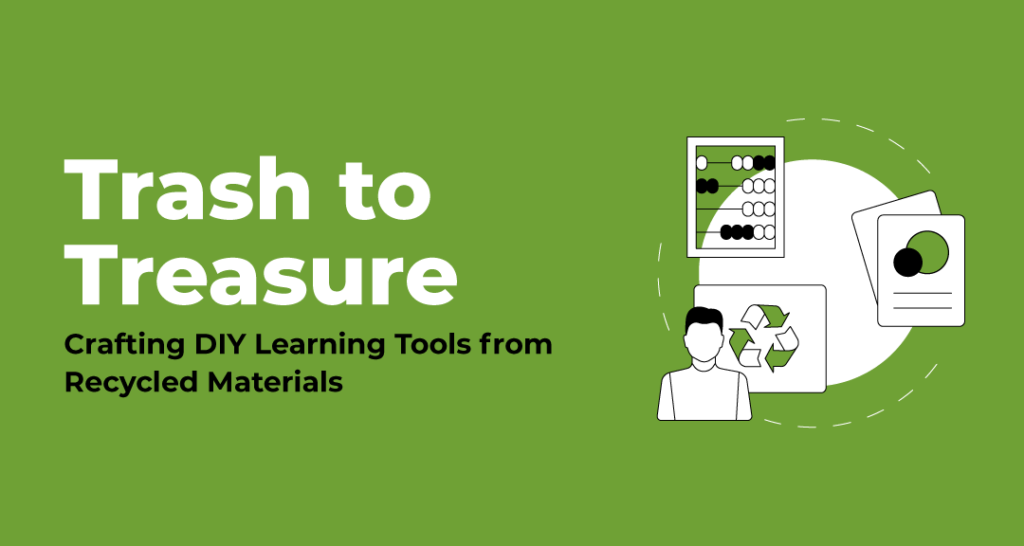
Do you know every piece of trash has a connecting story, which holds Pandora’s box of unforgettable learning and fun? From bottle caps to old newspapers, milk cartons, toilet paper rolls, cardboard, cereal boxes, and cans, every recycled material can truly make a difference in how kids learn when utilised as a powerful learning tool and become an art masterpiece.
Introducing the DIY learning tools created by turning trash into treasure makes classroom learning more engaging. It sparks imagination and encourages eco-consciousness and sustainability (beyond waste management) amongst the kids while teaching invaluable life lessons.
When teachers use recycled materials as teaching tools, the entire learning experience in the classroom and the ordinary lessons turn into an invaluable story that is interactive, imaginative, and sustainable. Also, the sustainable practice of using everyday waste items in education cultivates a sense of responsibility. It instils a love for the planet Earth in the kids, and they think twice about what they throw away while opening doors to hands-on learning in unexpected ways.
Trash to Treasure Using Recycled Materials: Quick Guide for Teachers
Here are some practical tips for teachers on incorporating sustainability practices in education by using different recycled objects and bringing positive change inside the classroom. Teachers play a significant role in instilling sustainable habits in kids from an early age and promoting environmental awareness by giving the kids a worthwhile exploration of recycled materials during their lessons.
Here’s a quick guide for teachers on how to introduce various recycled objects during educational activities and teach kids the importance of sustainability
1. Sensory Bottles
Sensory bottles are great props for educating students at an early stage and teachers can increase the kids’ imagination by creatively turning recycled bottles into sensory bottles.
- Material required: Water, glitter, rice, pasta, pulses, or beads
- Idea: Take an empty bottle with a wide neck and fill it with beads or pulses of different colours. The bottle will become a musical toy, and preschoolers can shake, roll, and happily observe when it moves.
- Benefit: This DIY learning toy will play a crucial role in encouraging sensory skills in the kids, enabling them to learn about colours, movement, and cause and effect. Furthermore, sensory bottles help young children develop visual tracking, rhythm, and auditory skills while stimulating curiosity. Also, teachers can use such learning toys to introduce vocabulary related to colours, textures, and emotions (e.g., “sparkly,” “calm,” “bubbly”). Such learning props are ideal for circle time or storytelling as they can be leveraged to create different sounds and encourage creative play in a fun (physical) way.
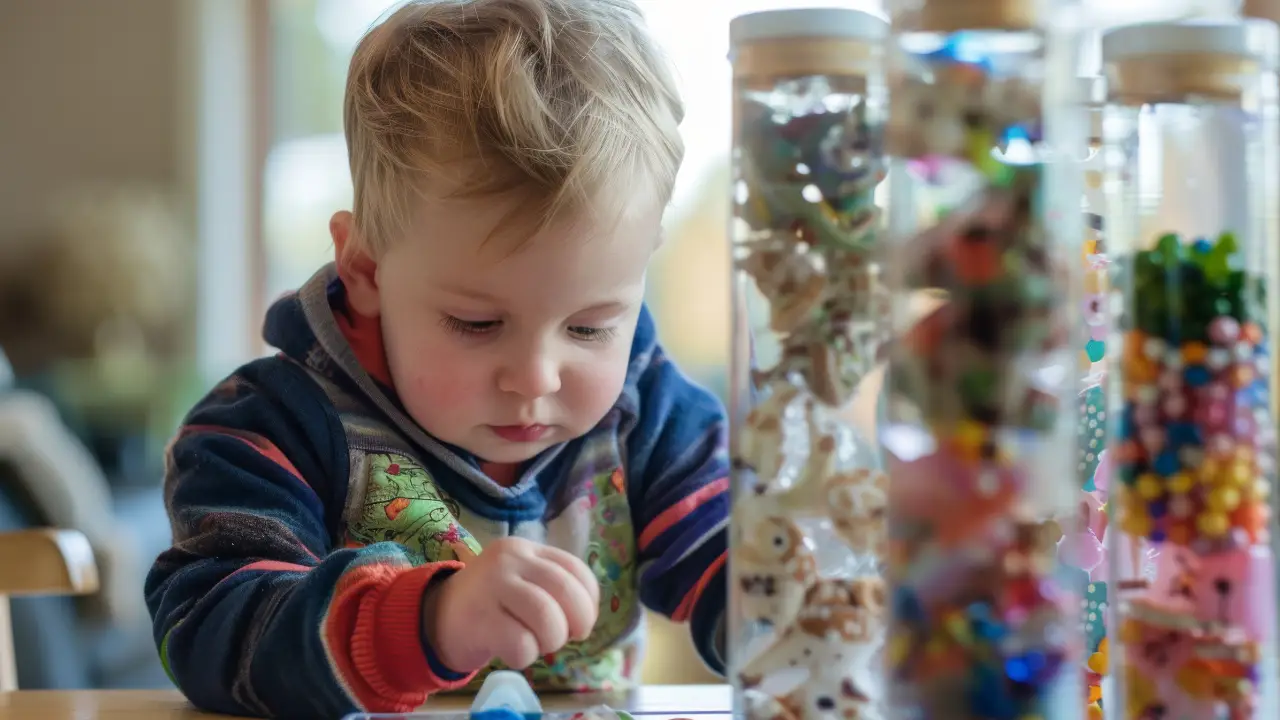
2. A whole city of cardboard buildings
Did you know that one ton of recycled cardboard can save up to nine cubic yards of landfill space on Earth? Using cardboard boxes for sustainable education practices is a beautiful approach to reducing environmental damage, and there are countless ideas for repurposing them as DIY learning toys.
- Material required: An empty cereal box, cardboard boxes of different sizes, disposable plates, straws, paper, coloured masking tape, colours, and a hot-glue pencil.
- Idea: Take cardboard boxes of different sizes and make a giant functional structure like a whole city of cardboard buildings wherein you can use a cereal box to make a large T.V. box, paint a cardboard box in blue colour to create a marble labyrinth with added twist of holes and cut boxes into three layers to make houses with rooms, and furniture, fruit shops, hospitals and vehicles. Additionally, we can make clouds using paper and rigid boxes. Besides this, students can have hours of fun by creating an adorable “feed the letter monster” box wherein they get access to different placards marked with various alphabets in different colours. Teachers use them as an educational toy to teach students about different alphabets.
- Benefit: Cardboard boxes fuel the students’ creativity beyond imagination and ensure hands-on learning.
3. A beautiful newspaper butterfly
Old newspapers and magazines are the perfect choice for involving students in artwork related to language, social studies, and visuals. Teachers can use newspapers and magazines to engage kids in excellent vocabulary exercises and current events discussions or ask students to create beautiful collages and vision boards for a topic they’re studying.
- Material required: Old newspapers and magazines, colours, ice-cream sticks, and adhesive tape
- Idea: Take old newspapers or magazines, cut the papers into two circles differing in diameters, fold them upside down multiple times to make a string-like structure, and paste them together to create the shape of butterfly wings. Paint the piece of newspaper for added fun. Besides that, teachers can cut out a butterfly’s shape using newspaper or magazine paper, paint the shape into a vibrant colour, and paste an ice cream stick in the middle. Teachers can familiarise students with the butterfly by singing a song like Fly like a Butterfly and flap your wings. Also, teachers can introduce a yoga “butterfly” pose to students and encourage their interest in healthy living.
- Benefit: Teachers can turn children’s boredom into endless hours of fun by teaching a rhyme about butterflies or introducing them to yoga activities.
4. A Kids-friendly Terrarium in a Glass Jar
Glass jars can be repurposed as amazing DIY learning tools, providing a great sensory experience for kids. Introducing them to a kids-friendly terrarium is a good idea to expose them to the natural world.
- Material required: Glass jar, stones, plants, water, sea toys, dry moss and soil.
- Idea: Take a mason glass jar and fill it with water. Add elements like stones and small sea toys into the jar to recreate a natural environment. Now add plants with roots, dry moss, and soil into the jar to create a mini-ecosystem inside a glass jar and let kids observe closed ecosystems. For smell, the teacher can add distinct smells like lemon, basil, and lavender. Teachers can use this DIY learning tool to create nature and greater environmental awareness by letting them have a tiny jungle of plants.
- Benefit: Such activities help children develop memory and sensory learning by facilitating their five senses of taste, sight, touch, hearing, and smell while creating lifelong learning. Also, these glass jars serve as observation jars by letting kids observe closed ecosystems.
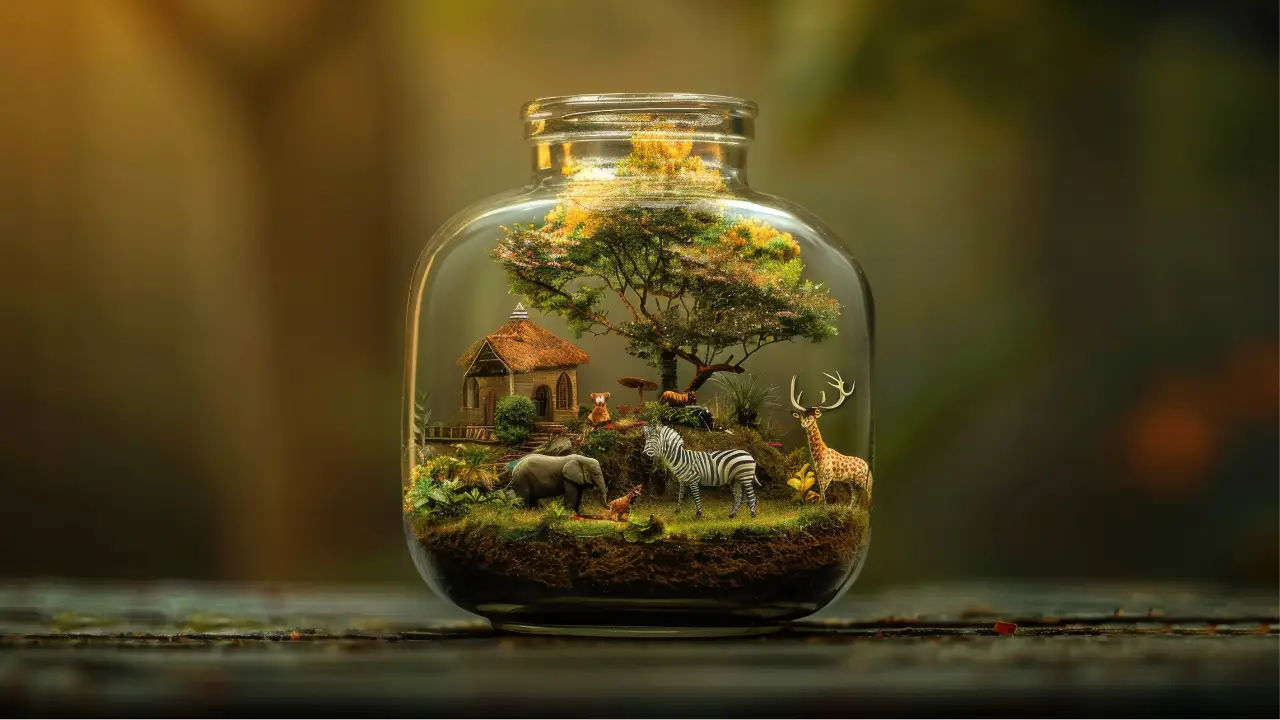
Safety Tips for Using Recycled Materials
Proper implementation of safety practices by teachers inside the classroom is truly crucial when using recycled materials. Following safety protocols turns the environmental stewardship and sustainability goal into a safe learning experience.
In a secure environment, young children feel safe and can immerse themselves mindfully in hands-on activities and turn waste products back into magical treasures without fear of injury. Additionally, when students feel safe, they become more receptive to exploring, experimenting, and enjoying the learning process.
But how can teachers introduce sustainable practices in the classroom? How can teachers let kids experience DIY learning from recycled materials while prioritizing student well-being? Well, here’s a comprehensive list of safety tips that teachers can consider to support creative classroom activities involving recycled materials that extend beyond waste management.
Clean and disinfect thoroughly:
- Before using any recycled item, it should be well washed to eliminate any bacteria, dirt, or chemicals that might be present on the item.
- Teachers should thoroughly rinse plastics such as bottles, jars, and containers under simple water with soap and warm water.
- When it comes to materials such as cardboard or fabric, disinfect a surface with a solution or leave it to dry under sunlight to reduce germ presence.
Avoid sharp edges and fragile items:
- When it comes to construction materials, avoid liquids in glass containers, as they are slippery, and any piece of metal or hard plastic with sharp edges, as they are dangerous.
- Objects like glass jars should be used only if closely supervised or substituted with a more appropriate plastic item.
- Sand down the sharp edges made of plastic or metal to avoid any risks of hurting.
Check for toxic substances or hazardous residues.
- Don’t use materials that might be poisonous or contain heavy chemical substances.
- Avoid containers that were used for cleaning agents or chemicals.
- Stick to food-grade plastics.
Ensure Age-Appropriate Materials
- For the younger ones, do not use things such as bottle caps or small screws that could easily be ingested or cause choking.
- It is important to be selective about objects with spare interconnectable or removable parts, especially for preschoolers and early elementary students.
Use Non-Toxic Paints and Glues
- Always opt for non-toxic, water-based paints, glues, and markers when decorating or assembling projects.
- Avoid using spray paints, permanent markers, or any materials with harsh fumes inside the classroom. Consider using glue dots, tape, or kid-safe glues for stronger adhesives.
In addition to the above safety guidelines, all students should be encouraged to wash their hands when handling recycled materials. It is crucial to ensure that even with clean materials, teachers never take a chance of coming into contact with dust or residual dirt. A quick handwash encourages a safe, germ-free and healthy environment.
Exciting Opportunity to Master Sustainable Practices in Education
As we all know, a teacher successfully embracing sustainable practices in education goes beyond the traditional teaching method, providing students with a fun, safe, and exciting learning environment where the kids can not only cultivate a sense of responsibility towards the environment but their level of creativity exploration and hands-on learning will touch the next level when they transform everyday recycled objects into something thoughtfully and safely under the supervision of teachers.
Indeed, this approach sparks curiosity and instils essential values of resourcefulness and sustainability in young minds. So, as a teacher, if you are ready to take your teaching creativity to the next level, Volt is offering a never-to-miss opportunity. Join us for an exclusive webinar, “Creating Engaging Learning Materials from Everyday Objects,” led by Padma Priya Paramkusam, an expert in innovative educational methods.
This interactive webinar, hosted by VOLT, covers tips for implementing sustainable practices in education, project ideas, and DIY learning tools to turn trash into treasure using ordinary everyday supplies and inspire students with a fun learning experience.
Don’t miss this opportunity to enrich your classroom! Save the date and sign up now to reserve your spot.

